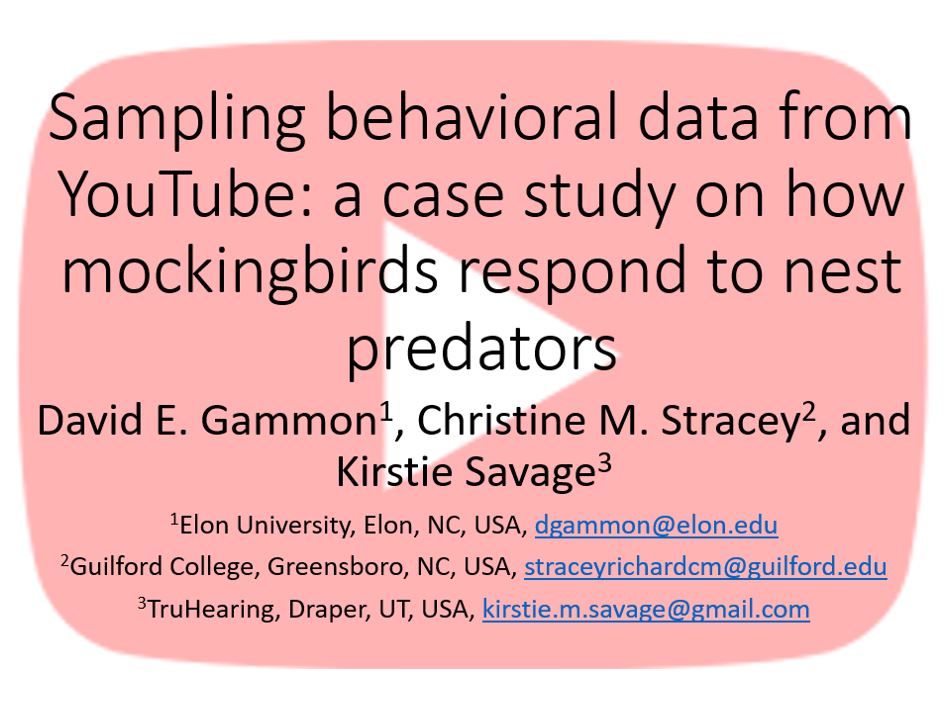Dave Gammon and collaborators from Guilford College and Utah gave two research presentations at an international conference of the Animal Behavior Society held in San Jose, Costa Rica in July 2022.
If you were a bird, how would you respond if a predator arrived at your nest?
Last year, Professor of Biology Dave Gammon joined a research collaboration with two other field biologists to find out how mockingbirds respond to common nest predators, such as cats, crows and snakes. Gammon, Kirstie Savage (TruHearing, Draper, Utah) and Christine Stracey (Guilford College) are conducting studies on the campus of Elon University that follow up on the observations Stracey made of mockingbirds in Florida during her dissertation research.
Gammon and his collaborators recently discovered that mockingbirds use different alarm calls to refer to each type of predator. Specifically, mockingbirds “chat” for the cats, “scream” at the crows and “chuck” for the snakes. They demonstrated these results through both a field experiment and a complementary study in which data were sampled from YouTube videos.
It is rare for field biologists to sample their research data from YouTube, even though the total archive of YouTube videos grows by 7,500 hours of new content every 15 minutes, and over 250 million hours of content every year. YouTube therefore represents an exciting new opportunity for animal researchers.
Gammon participated in the following research presentations at the annual meetings of the Animal Behavior Society, which took place July 19-23, 2022 in San Jose, Costa Rica:
- Gammon DE, Stracey CM, and Savage KM. Sampling behavioral data from YouTube: a case study on how mockingbirds respond to nest predators
- Stracey CM, Savage KM, and Gammon DE. Northern Mockingbirds Produce Different Alarm Calls For Different Predators: An Experimental Test



